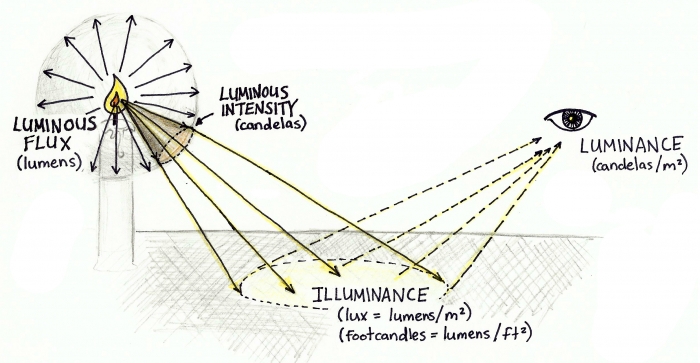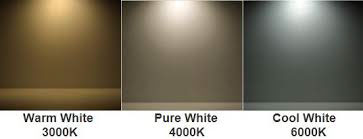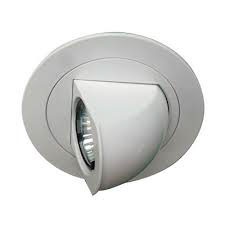They have occupied an important role in many homes because they fulfil the fundamental purpose of lighting – to provide functional ambient light throughout the house when the night sets in. As the functional go-to-lights of our homes, they are most likely to be used the most too. Here are the key points
1.Level of brightness
Let’s start off with the brightness level.The "brightness" of light can mean the amount of light coming from a light source (luminous flux (lumens)) or the amount of light falling on a surface (illuminance (lux)), or the amount of light reflected off a surface (luminance (cd/m2) ).

Does that mean you should choose downlights with the highest possible characteristics ?
No! you would choose level of brightness based on the characteristics of each room, such as its size ,ceiling height ,type of job and reflection on desk surface Wattage, on the other hand, measures how much energy is expended to produce a set amount of light output. This is directly related to your quarterly energy bill so choose wisely. As a good general rule of thumb, choose downlights that can produce the same lumens at lower wattages.
The best way to measure the true efficiency of downlights is through Lumens per Wattage. Lumens per watt tells us how much lumens can be produced per wattage of energy expended.
2.Quality of Downlights
One thing that many poeple don’t often mention is that downlights can vary greatly in their quality of construction.
Build quality has a real world impact on the performance and durability of the product.
Downlights that are poorly constructed may even produce uneven and patchy light that can throw your room off balance.
The three considerations of build quality are:
Frame quality– Cheaper downlights tend to use plastic frames while better quality downlights are made of aluminium frames. In saying that, frame material is mostly for aesthetics purpose and has no real impact on the performance or durability of the product.
Heatsink quality– The real difference in performance and durability lies in the quality of the heatsink used. Cheaper downlights often use plastic heatsinks that are less durable as they are more prone to overheating issues. When given a choice, always choose one with aluminium heatsink over a plastic one.

Diffuser quality– Another avenue where build quality matters is the quality of the diffuser. Poorly made diffusers can feel flimsy and cheap to the touch and often diffuse light poorly compared to better made diffusers.
3.Colour temperature
Colour temperature is another important consideration as it has strong influence on the mood of your home.
Colour temperature is measured in Kelvin – lower Kelvin numbers produce Warm White while higher Kelvin numbers produce Cool White.
Warm white = Less than 4000K
Cool white = More than 4000K
Cool white = More than 4000K

4.Beam angle
Beam angle refers to the spread of light from the light source.
Downlights with wide beam angle creates a wider, softer light whereas downlights with narrow beam angle produce a concentrated light which is ideal for spot lighting.
For general lighting, choose one with wide beam angle. Downlights with narrow beam angle, on the other hand, are good for spot lighting or task lighting.
They can be used to highlight certain architecture or drawing in the room or to direct light to a specific area such as a study desk or kitchen table.
Wide beam = 60 degree or more
Narrow beam = Less than 60 degree
Narrow beam = Less than 60 degree

5.IP rating
The next step is to determine whether you need good IP rating for your downlights. IP rating classifies a lighting fixture’s degree of protection against both solids and liquids. Downlights with good IP rating is a must for areas that are exposed to water or dust such as shower room, outdoor area or if you have a swimming pool.
6.Dimmable / Non-dimmable.
Downlights can either be dimmable or non-dimmable. Dimmer switches can be added to dimmable downlights to control its level of light output. The dimmable feature is very useful for entertainment and home theatre rooms where the surrounding lighting has powerful effect on our entertainment experience. To give you an idea, think of your last experience at the cinema and the crucial effect of lighting.
Now is it a necessity? No. But if you can afford it then it is a luxury definitely worth your investment. One word of caution, though.
7.Fixed Frame
Now you need to decide whether to get downlights with gimble or fixed frame, or a combination of both. Gimble frame allows for adjustment of light angle, which is very useful for task lighting such as kitchen, bathroom and study areas. Otherwise, stick to fixed downlights as they are usually cheaper and well suited for general lighting.
You may also notice that some downlights have diffusers that sit flush against the frame while others are indented. This is mostly just for appearance and has no other impact.

8.Warranty
Finally, do not neglect the warranty part! Whenever possible, choose downlights with the longest in-home warranty. It can potentially save you hundreds of dollars from having to hire electricians in the unfortunate case of a break down.

